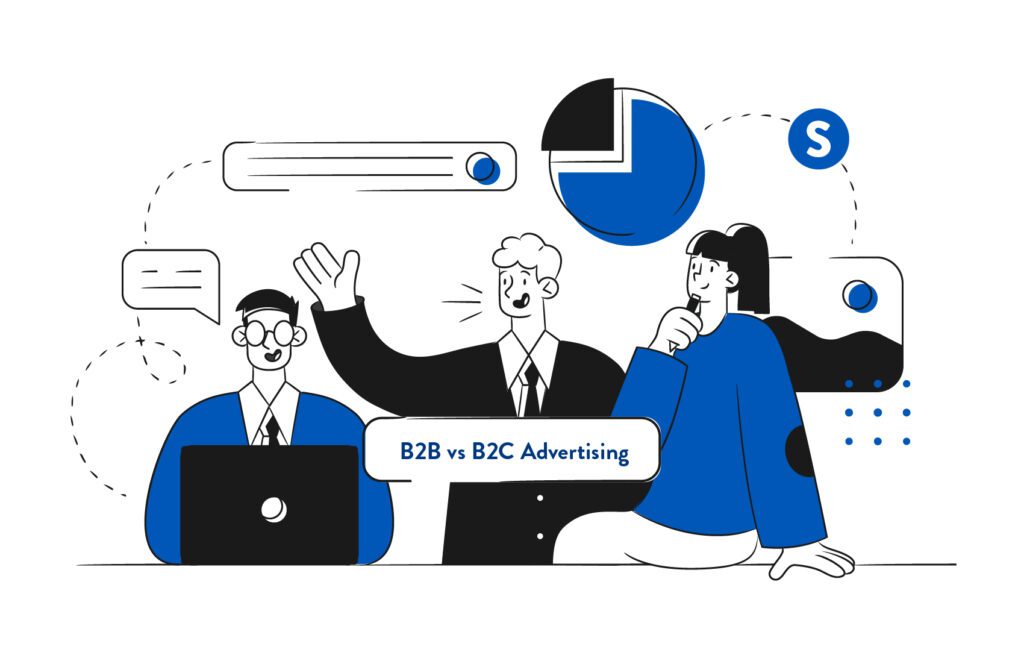
When it comes to advertising, the strategies employed for B2B (Business-to-Business) and B2C (Business-to-Consumer) campaigns can differ significantly. Understanding these differences is crucial for any marketer looking to maximize the effectiveness of their campaigns. In this article, we’ll explore the key distinctions between B2B and B2C advertising, highlighting strategic approaches that cater to each audience.
Target Audience and Decision-Making Process
In the B2B space, the target audience is typically composed of businesses, which means the decision-making process is often more complex and involves multiple stakeholders. These stakeholders could include procurement managers, CEOs, or department heads, all of whom have different priorities and pain points. B2B ads must address these various concerns, presenting solutions that can satisfy a range of needs within a company.
Conversely, B2C advertising is aimed at individual consumers. The decision-making process is usually quicker, driven by personal preferences, emotions, and immediate needs. B2C ads often leverage emotional triggers and aspirational messaging to connect with consumers on a personal level, aiming to spark quick purchasing decisions.
Sales Cycle and Buying Journey
The sales cycle in B2B markets is typically longer and more intricate compared to B2C. B2B transactions often involve higher stakes, with purchases being more expensive and having long-term implications for the buyer’s business. As a result, B2B advertising must focus on building trust and nurturing leads over time, using detailed content like case studies, white papers, and webinars to guide prospects through the buying journey.
In contrast, B2C transactions are generally more straightforward, with a shorter sales cycle. Consumers are often looking for instant gratification, so B2C ads focus on creating urgency and driving immediate action. The buying journey in B2C can often be as short as a single website visit or social media interaction, necessitating punchy, direct messaging that encourages quick decisions.
Messaging and Content Strategy
B2B advertising leans heavily on informative, value-driven content that demonstrates expertise and solves specific business problems. The messaging is typically more formal, focusing on how a product or service can improve efficiency, reduce costs, or generate ROI. Content such as industry reports, in-depth articles, and product demos are common in B2B campaigns, catering to an audience that prioritizes logical, fact-based decision-making.
B2C advertising, however, often employs more creative and emotionally engaging content. The messaging is usually more casual and fun, focusing on the benefits and experiences a product or service can offer. B2C content might include lifestyle videos, influencer partnerships, and eye-catching visuals designed to evoke emotion and create a strong brand connection.
Channel Selection
The channels used for B2B and B2C advertising can also differ significantly. B2B advertisers often focus on platforms that facilitate professional networking and information sharing, such as LinkedIn, industry publications, and email newsletters. The goal is to reach decision-makers in a context where they are already thinking about business challenges and solutions.
B2C advertisers, on the other hand, tend to prioritize channels with broad reach and high consumer engagement, such as Facebook, Instagram, and Google Ads. These platforms allow for highly targeted ads that can reach consumers based on demographics, interests, and online behavior, making them ideal for driving brand awareness and sales.
Conclusion
Understanding the key differences between B2B and B2C marketing is essential for developing effective strategies. While B2B advertising often requires a more targeted, informative approach that nurtures leads over time, B2C advertising typically aims to drive quick decisions with emotionally engaging content. By recognizing these distinctions and tailoring your advertising strategies accordingly, you can better connect with your intended audience and achieve your business goals.
To read more tips on B2B marketing strategies, check out our other B2B articles. If you’re interested in partnering with STORY to optimize your current marketing efforts, visit our website to learn more about our marketing services.